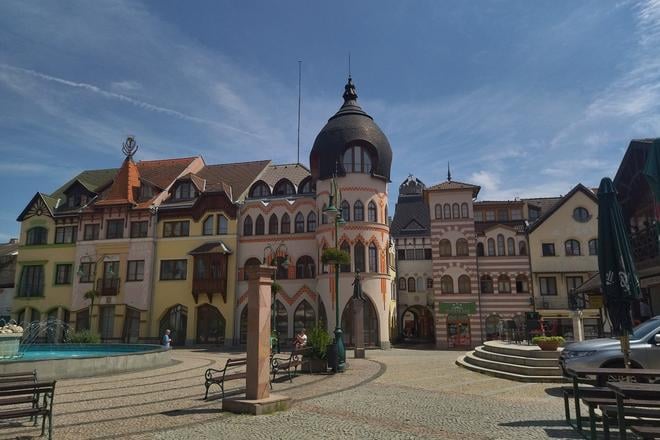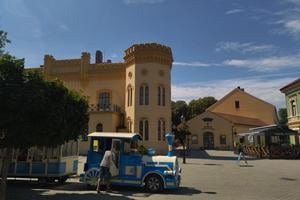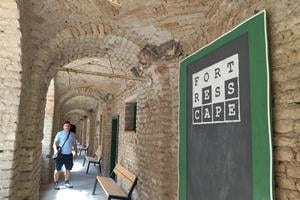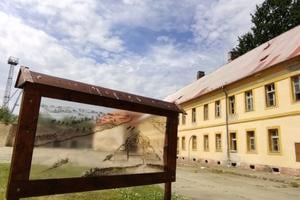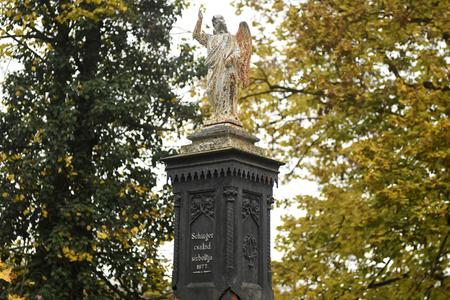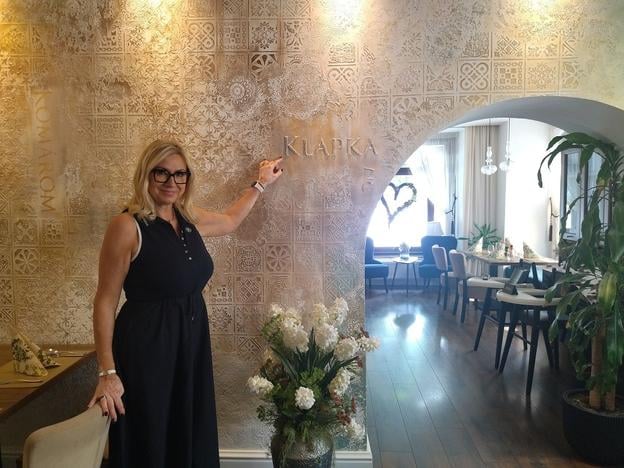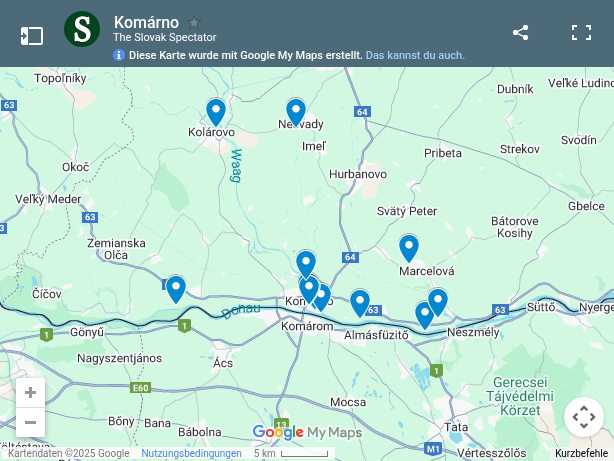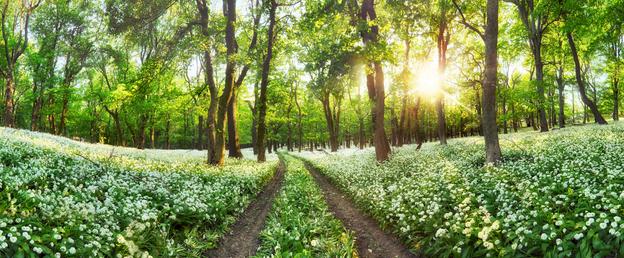You can read this exclusive content thanks to the FALATH & PARTNERS law firm, which assists American people with Slovak roots in obtaining Slovak citizenship and reconnecting them with the land of their ancestors.
In Komárno, a city in southern Slovakia, a number of compelling attractions await discovery.
The city has set its sights on promoting experiential tourism, particularly for active travellers. Its strategic location at the confluence of the Váh and Danube rivers has fostered the growth of water sports. The historic centre, meanwhile, entices visitors with its cluster of churches, statues honouring notable natives, and distinctive experiences – from an escape room housed in an old military fortress to the Cold War Museum, tucked into the basement of the Matica slovenská building. For more on the region, see our Nitra city guide.
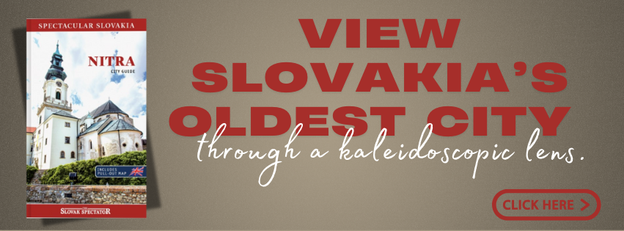
Museum in a shelter
The Matica slovenská building in Komárno is best known for its controversial statue of Saints Cyril and Methodius. Yet this socialist-era structure holds more than just political symbolism. It also houses the local amateur theatre, Komora, and features an underground civil defence shelter.
Such shelters were constructed in large numbers during the socialist period, built in anticipation of a possible nuclear war between the Soviet Union and the United States. Though the feared conflict never came to pass and the Soviet Union eventually collapsed, many of these bunkers still remain.
The shelter beneath Matica slovenská has since been refurbished and transformed into the Cold War Museum. Jozef Černek, chairman of Matica slovenská and an avid theatre director at Komora, explains: “Collectors have donated numerous artefacts from the socialist era, including period furniture and propaganda posters.”
As he leads us through the museum, visitors encounter gas masks, communist propaganda, and magazines from the socialist era, alongside armchairs and other vintage furnishings from the 1960s and 1970s. For those who did not live through that time but wish to better understand it, this combined shelter and museum offers an experience that is both informative and quietly haunting.
A city centre full of striking contrasts
In Komárno, people of various faiths – Calvinists, Evangelicals and Catholics – live side by side. For those in search of a deeper spiritual experience, a visit to the Basilica of St Andrew is essential. The church houses underground tombs and a grand organ. A local guide might share stories of how the church has been destroyed and rebuilt time and again following devastating earthquakes, a quiet testament to the city’s resilience.
A helping hand in the heart of Europe: a travel guide to Slovakia.
Just steps away, in the heart of the city, stands the Holy Trinity Column, a baroque monument dating back to the early 18th century. Directly behind it, however, rises a starkly functionalist building from the 20th century – a jarring juxtaposition that captures Komárno’s layered architectural identity.
Such contrasts, found throughout the city, are part of what gives Komárno its distinctive charm and quiet complexity.
Deserted Courtyard of Europe
Among Komárno’s more unusual attractions is the Courtyard of Europe, a bold but ultimately underwhelming urban experiment. The idea behind this modern square was ambitious: local enthusiasts sought to revitalise a neglected inner block in the city centre by constructing buildings in the architectural styles of various European nations.
Launched at the turn of the millennium, coinciding with Slovakia’s accession to the European Union, the project aimed to celebrate the continent’s shared cultural heritage.
Yet the square has struggled to realise its promise. Though it now hosts a handful of buildings, a department store and several cafés and pubs, it remains largely devoid of life. On a recent Friday afternoon, The Slovak Spectator found the square nearly empty, as most passers-by opted instead for the organically evolved charm of the old city centre.
Despite its brightly coloured façades, the Courtyard of Europe feels curiously lifeless – its aesthetic leaning towards the kitsch rather than the convincing. Perhaps the most compelling features of the space are the statues of notable Hungarian rulers that line the square, offering a more authentic sense of history than the setting itself.
A reflection of Komárno’s history
In stark contrast to the quiet Courtyard of Europe, the old centre of Komárno brims with life. Streets are animated with passers-by, and cafés and restaurants buzz with conversation and clinking cutlery.
Visitors can stop for lunch at a restaurant named after General György Klapka, one of Komárno’s most celebrated historical figures.
After a long career as a manager in a health insurance company, owner Ingrid Spišek made an unexpected pivot into the world of gastronomy. “My mother was an excellent cook, so I thought I’d give it a try,” she says, reflecting on the beginnings of her culinary journey.
Her first foray was a traditional Hungarian tavern – or csárda – near a tranquil branch of the Váh River, which she operated for a decade. Just six months before the outbreak of the Covid-19 pandemic, she won a tender to run a restaurant in the heart of Komárno.
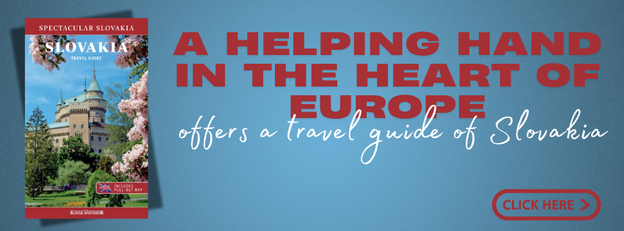
Though the pandemic eventually forced her to close the riverside csárda in 2022, she chose to keep the city-centre restaurant. “It’s my favourite place; I spend whole days here,” Spišek says with a smile. Her passion is evident in the food; the pork perkelt, a rich paprika-spiced stew, is nothing short of exceptional.
The restaurant’s interior reveals the hand of a skilled designer. One wall in particular draws the eye: what appears to be embossed wallpaper is, in fact, a hand-painted relief crafted by a talented local artist.
Last year, Spišek expanded her culinary presence by opening a café in the city centre, which she fittingly named Locals. It is now run by her daughter, Zoé Eszter Tabi.
With its wooden accents, floral touches and spacious outdoor terrace, Locals exudes a warm, inviting charm. A rotating food truck adds variety to the menu, offering something new each week. Spišek has recently taken another bold step, purchasing a neighbouring business to continue growing her footprint in the city’s vibrant hospitality scene.
Music draws people to the town
One of Komárno’s most appealing qualities is the constant hum of activity in its city centre, particularly on weekends. Music drifts through the streets, creating a festive atmosphere that draws both locals and visitors. The inspiration, many say, comes from just across the border.
“Hungarians are masters at promoting their regions; they seamlessly blend culture, live music and gastronomy,” observes the owner of Restaurant Klapka.
View Slovakia’s oldest city through a kaleidoscopic lens with our Nitra city guide.
The resulting increase in foot traffic benefits local businesses, particularly in the food and hospitality sectors. The synergy is palpable: bustling streets translate into higher turnover for cafés, restaurants and vendors.
According to Ingrid Spišek, Komárno and its Hungarian counterpart Komárom – twin cities separated by the Danube – complement each other remarkably well, each boosting the other’s tourism appeal.
“Tourists from Hungary often come on day trips and regularly dine in our restaurants and cafés,” she notes. In recent years, Komárno’s tourism has undergone a quiet transformation, as more travellers seek out authentic experiences, regional cuisine and lively cultural events.
What to see in and around Komárno
Discover part of Western Slovakia with our Nitra travel guide.
Komárno
Cold War Museum: Situated in a Soviet-era underground civil defence shelter beneath the Matica slovenská building.
Basilica of St Andrew: It offers a profound spiritual experience. The church houses underground tombs and a grand organ.
Courtyard of Europe: It points to the common roots of European culture.
General Klapka Square: A lively area full of cafés and restaurants serving traditional local dishes.
Komárno Tip: The easternmost tip of Žitný Island, featuring a relaxation zone.
Officers’ Pavilion: Originally built as a social venue for soldiers, this historic building once served as a central gathering place for military personnel.
Zichy Palace: Home to a permanent historical exhibition that guides visitors through Komárno’s layered past.
Jewish Synagogue: No longer an active place of worship, this former synagogue is now part of a senior living facility – a poignant reminder of the city’s Jewish heritage.
Anglia Park: A peaceful English-style park near the city centre, ideal for a quiet stroll or picnic.
Komárno Fortress: A preserved anti-Turkish military fortification, still standing but currently awaiting full reconstruction. Its imposing presence speaks to centuries of strategic importance.
Dead Arm of the Váh River (Mŕtvák): A popular recreational and sporting area where locals and visitors alike come to jog, paddle or relax by the water.
Thermal swimming pool: Komárno’s mineral-rich thermal waters are said to have healing properties, comparable to those of the renowned Bardejov Spa.
Chocomaze: A boutique chocolate factory producing premium confections – a sweet stop for any curious gourmand.
In the surrounding area
Boat Mill, Kolárovo: The Museum of Water Milling showcases a unique fishing net-making machine, one of the first ever built in the world.
Marsen Distillery, Marcelová: A small-scale distillery known for its top-quality fruit distillates. Visitors can tour the production facilities and sample spirits in the on-site shop.
Ecofarm Veľký Lél: Located on Veľký Lél Island near Komárno, this eco-friendly farm offers rustic accommodation and family-friendly nature activities, including camping under the stars.
Pumping station, Patince: A rare technical monument featuring well-preserved period equipment and a small exhibition on the history of water management in the region.
The southernmost point of Slovakia, Patince
Thermal swimming pool and wellness Patince: A modern spa complex offering thermal baths and wellness services – a favourite among locals for relaxation.
Roman camp, Iža: The archaeological site of Kelemantia, a Roman military camp that once formed part of the famed Limes Romanus, the empire’s border defence system.
Thermal swimming pool, Nesvady: Another local spa destination, known for its restorative waters and peaceful atmosphere.
Spectacular Slovakia travel guide
A helping hand in the heart of Europe thanks to our Slovakia travel guide with more than 1,000 photos and hundred of tourist spots.
Our detailed travel guide to the Tatras introduces you to the whole region around the Tatra mountains, including attractions on the Polish side.
Lost in Bratislava? Impossible with our City Guide!
See some selected travel articles, podcasts, and traveller info as well as other guides dedicated to Nitra, Trenčín Region, Trnava Region and Žilina Region.


